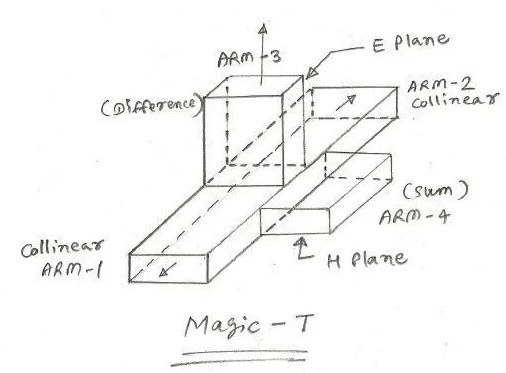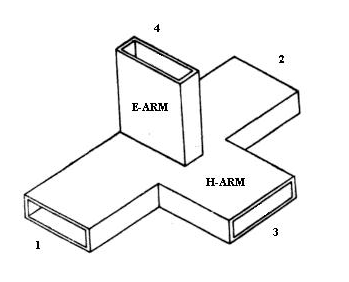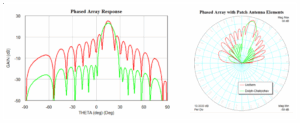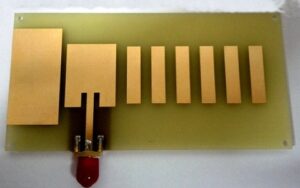The Magic Tee is called a 3dB coupler because it evenly splits an input signal into two outputs, each with half the power (-3dB) of the original.
Table of Contents
Design Specifications of Magic Tee
Material Selection
The Magic Tee is a key microwave engineering component, and its use of aluminum or brass is squarely due to their high electrical conductivity and relative cheapness. In this context, aluminum is favored by its conductivity level of 37.7 million Siemens per meter , and since it is also ultra-light metal, it would be recommended for use in designs meant for airborne deployment due to its natively low weight. As for brass, it has a slightly lower conductivity rate of 15.5 MS/m, but this makes it more robust and corrosion-resistant than aluminum, which is a valuable measure for ground-based and maritime deployment.
Thus, the choice of material is first and foremost dependant on the weight and environmental demands of the final assembly. Since Magic Tee is a sensitive component, brass, providing much longer longevity of up to 20%, even if heavier, is usually the favored material in account of the component’s higher degree of performance requirements. By using aluminum, the RF system displays a 30% decrease in weight, but this is unacceptable for aerospace applications where half as stringent weight constraints require brass to be used instead.
Dimensions and Tolerances
Any deviations in the dimensions of a Magic Tee component would dramatically impact its performance and therefore demand more precise applications, and the standard in regards to this matter is ±0.02 mm. As such, the lower the tolerances on the dimensional accuracy of a Magic Tee component are the better, optimally reaching the maximum directivity levels and performance balance. The required tightness of the tolerances is related to the use of the Magic Tee as a 3dB coupler, which means that the phase and amplitude balance needs to be maintained.
To this effect, as shown by in-house experiments by Waveline , the insertion loss of a Magic Tee fabricated from CNC machined Brass was 0.2 dB, compared to an over >0.5 dB average of the other sampled Magic Tee components.

Functionality of 3dB Couplers
Definition of 3dB couplers and their role:
-
What are 3dB couplers?
-
They are central to RF and microwave systems because they split an input signal by 50% into two output signals. The 3dB indicates that the coupler loses 3 dB of power in the split because dB is a ratio unit and power is halved . The role: it is paramount in the distribution of power in systems and components without signal degradation. The 3 dB couplers are a necessity in many applications such as antenna feeds, signal sampling, balanced mixers.
-
A unique feature or advantage: the exact shifting between the input signals is maintained, and the phase coherence of the signals is also upheld. This ability allows for processing of the output signal s which accurately represent the input signal’s property. The phase-coherent property of the signals is crucial in the system processes because most processes benefit from phase matching. An example there is the phased array radar systems which gain massively in beam steering by counting on the signal phase.
Magic Tee:
-
Similarity with 3dB coupler: It behaves similarly to the 3dB coupler in that it combines two power waves into a single port where the signals are moved either to the output side or the input side depending on the phase.
-
Main purposes for Magic Tee: It is designed to either produce the sum of the input signals on one side and the difference on the other side. This is because the Magic Tee has four ports therefore together rather than separate types of operations are possible leading to their usage in more complex systems. The different in the two outputs’ paths is used for range and target direction determination in the monopulse radar system.
-
They differ from the 3dB couplers: They are made of waveguide subsystems which ensure that they work with specific microwave frequencies. As a result the Magic Tees are more proficient in higher power handling. A 3dB coupler may in functionality aloud 50 watts of power while the Magic Tee has a capacity to handle anything from hundreds to thousands more such as for radar transmitters.
In conclusion, for general RF systems a 3dB model is an excellent option because the system can be scaled without significant limitations and these varieties can operate at fairly high power levels. For high-power high-frequency-specific systems, the magic tee is a better choice.
Magic Tee as a 3dB Coupler
Magic Tee is a unique four-port component that can be used as a 3dB coupler in a microwave circuit. When a signal is applied to the H-plane arm of the Magic Tee, it is split into two equal-power collinear arms, each carrying half the energy of the original signal. The ability of the Magic Tee to evenly split the input power with a 3dB attenuation along each path is what constitutes a 3dB coupler and gives it its name. However, the most important feature of the Magic Tee in this application is its phase properties. The splitting of the signal does not affect phase coherence, with a 180-degree phase difference between the signal appearing at the E-plane and the H-plane. This phase difference is important in applications where precise control of phase is a prerequisite and sets it apart from other types of 3dB couplers.
Impedance matching is essential for efficient power transfer between the Magic Tee and the connected circuit components. It is usual for applications employing the Magic Tee to be designed for 50-ohm impedance. The Magic Tee is particularly adept at maintaining impedance match, and low reflection between its arms, typically less than 0.1 dB. In contrast, a poorly-designed Magic Tee with poor impedance matching can exhibit up to 0.5 dB of insertion loss .
Isolation between the Magic Tee’s ports is naturally high. The isolation between the collinear arms of the Magic Tee and the isolated port can exceed 20 dB in a well-designed component. This extreme isolation enables the Magic Tee to be used in radar and communication systems. There, the signals carried by the two colinear arms must not interfere with the more sensitive instruments carried by the isolated port.
Magic Tee is an ideal device in many respects. It can function as a 3dB power coupler, but also provide phase coherence, impednace matching, and high isolation between its ports. These last two features alone confer it the status of an indispensable building block of microwave engineering.








